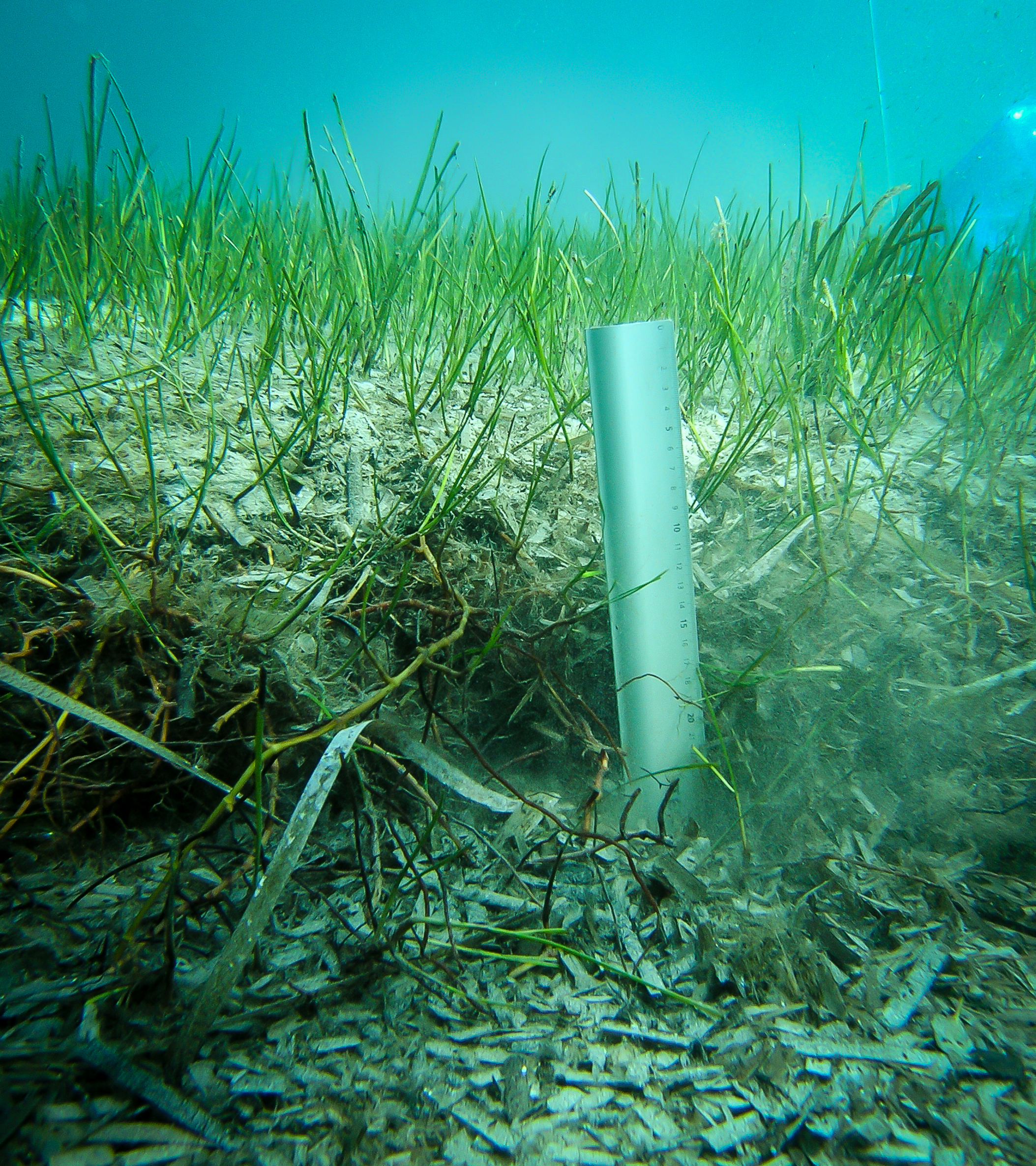Abstract
Vegetated coastal ecosystems such as saltmarshes, mangroves and seagrass beds are increasingly promoted as sustainable storm and flood defense solutions by reducing wave energy. Yet, there is still intense debate on the ability of root mats to mitigate erosion, with some studies arguing that the direct contribution of roots in preventing sediment erosion is minor, while others consider them of major importance.
Here, we hypothesize that the contrasting findings on the role of seagrass root mats in preventing erosion may stem from differences in sediment type. To test this idea, we investigate how root mats of seagrass, that thrive in both sandy and muddy sediments, mitigate wave-induced cliff erosion using seagrass in manipulative flume experiments. Results demonstrate that roots are very effective in reducing cliff erosion rates in sandy sediments.
Cliff erosion rates were reduced up to 70% in sandy sediment with high seagrass root biomass. In contrast, cliff erosion rates in cohesive muddy sediments were low and unaffected by seagrass roots. This highlights the important role of seagrass roots in erosion mitigation, which has been overlooked compared to the role of canopies which has received more attention.
We suggest that management strategies should be developed to enhance the stabilization of sandy sediment, such as i) using species with high belowground biomass, ii) use pioneer fast growing species and iii) applying temporary stabilising measures.









